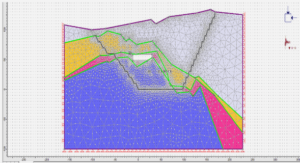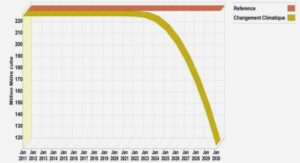Fabrication of superhydrophobic coatings
Sol-gel process
As the name implies, the sol-gel process involves the evolution of inorganic networks through the formation of a colloidal suspension (sol) and gelation of the sol to form a network in a continuous liquid phase (gel) [1].
Sol–gel method has some unique advantages compared to other methods. It is a low-cost method suitable for application on large areas and complex-shaped substrates. The greatest advantage in employing the sol–gel method is fabricating superhydrophobic surfaces for all kinds of solids, such as metals, glass, silicon wafer, polymers, and textiles. There have been lots of papers published on the fabrication of superhydrophobic coating by sol-gel methods in recent years [2-6]. Material of low surface energy and micro- or nanoparticles can be added into the network to create superhydrophobic surfaces. JD. Brassard et al. [5] have prepared superhydrophobic thin films on flat aluminum and silicon substrates by spin-coating methods with the monodispersive spherical fluorinated silica nanoparticles prepared by sol-gel processes. However, most of sol-gel superhydrophobic coatings prepared by dipping, spining or spraying processes are not very durable due to a lack of chemical bonds connected to the substrate. Therefore, we need find a medium such as self assembled monolayers acting as binder between coatings and subtrates.
Electrochemical deposition
The electrophoretic deposition (EPD) technique has been considered as an effective technique to fabricate superhydrophobic films recently due to the great advantages and easy control of the thickness and morphology of a deposited film through simple adjustments of the deposition time and applied potential[7]. During the EPD process, charged suspended particles in a liquid medium, with a DC electric field, are attracted and deposited onto an electrically conductive substrate of the opposite charge. Therefore, there are two types of electrophoretic deposition. The deposition of positively charged particles on the negative electrode (cathode) is termed as cathodic electrophoretic deposition, and in the contrary case, it will be termed anodic electrophoretic deposition.
Huang et al.[8] have prepared superhydrophobic ZnO thin films on aluminum alloy substrates through the electrophoretic deposition process using stearic acid functionalized zinc oxide nanoparticles suspension in ethanol. The EPD process shows great controllability of the atomic percentage of Zn and O, roughness and water contact angle of the thin films by varying the deposited bath temperature. As they reported, the 50°C deposited ZnO films showed superhydrophobic properties with water contact angle of 155 ± 3° . Based on EPD technique, Ogihara et al.[9] reported SiO2/trimethylsiloxysilicate superhydrophobic composite coatings. Also, by changing the controllable electrophoretic deposition time, they successfully fabricated a transparent superhydrophobic coating. This result as well as work of Huang et al.confirmed that EPD owns great advantage in controllability of deposited films as compared to other methods such as self-assembly [10], dip-coating [11].
1. Introduction |




